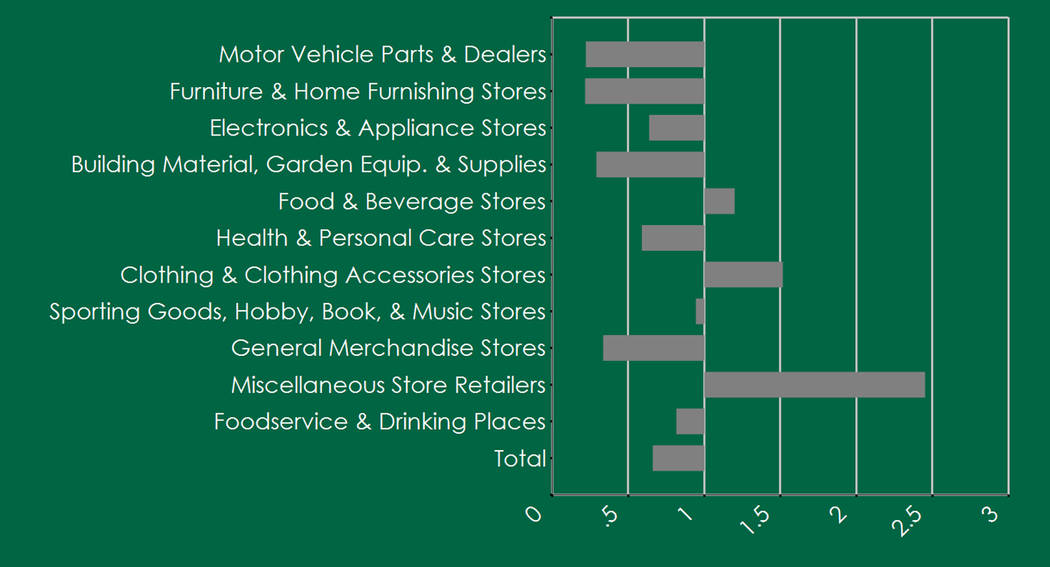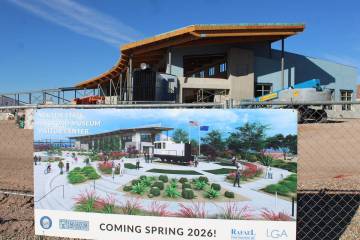Study: City ‘leaking’ $87 million annually in sales
Boulder City is “leaking” $87 million annually in potential lost revenue, according to a report released earlier this week.
The report, also known as a gap analysis, was prepared at no cost to the city by Buxton Co., an industry leader in retail analytics. It provides a look at how many dollars the community is capturing in the retail industry, as well as how much is being spent outside of Boulder City by residents.
“This is just one of the ways the mayor, council and city staff plan to monitor the impacts of the opening of I-11. We needed to set a baseline for what our retail looks like now so we can best compare it to data after the new highway opens,” said City Manager Al Noyola.
He and Community Development Director Michael Mays came up with the idea for the study, using data from earlier this year to prepare for the Aug. 9 opening of Interstate 11 that will bypass the city.
Information in the report provides details on how well the retail needs of residents are being met, uncovered unmet demand and possible opportunities, examined strengths and weaknesses of the local retail sector, and measured the difference between estimated and potential retail sales.
Key findings show lacks in the home furnishing and appliances, electronics, department store, optical, motor vehicle parts and automotive sales areas, and an abundance of retailers specializing in office supplies, clothing and accessories, and hardware.
Mays said the study does not mean the city should work to capture the entire $87 million leak as the community’s population is not large enough to support large retailers
“This report does suggest other retail categories identified as leakage (e.g. convenience stores, drug stores, auto parts) could be the basis for future retail attraction efforts,” he said. “The city can use this study to help demonstrate market demand to potential retailers.”
Since the study was just presented to the city, it’s too early to discuss any potential impact on businesses, partnerships and/or city operations, said Lisa LaPlante, communications manager.
Jill Rowland-Lagan, CEO of the Boulder City Chamber of Commerce, said the study could be a “great indicator of new options that may find Boulder City attractive to start up a business providing those under-represented goods.
“It can also be an excellent guide for current owners to consider adding to their operation and provide added value to their current base of support as well as interest new customers to increase business.”
She said having a baseline is essential to target “individuals and tailor or tweak our marketing efforts for the coming years. We will be stepping into a more professional and well-designed, target market effort centered around drawing the right guest into Boulder City.”
Buxton offered to perform more in-depth reports at various rates, LaPlante said.
In the meantime, the city is exploring ways to track credit card data that will provide details about where customers are coming from and how much they are spending in town.
“Mayor (Rod) Woodbury, City Council and I want to know what the very specific impact is to our community after Aug. 9,” Noyola said. “This, along with the Buxton study, will help us measure the impact of the highway and help the city with future marketing efforts.”
It also is close to completing its first retail and office vacancy study, LaPlante said.
Hali Bernstein Saylor is editor of the Boulder City Review. She can be reached at hsaylor@bouldercityreview.com or at 702-586-9523. Follow @HalisComment on Twitter.
















